The choice of lamps for lighting industrial premises
Lighting devices can be short (up to 20 — 30 m) — lamps and far — spotlights. Each device consists of a light source, a device that redistributes the luminous flux of the light source in space, devices for switching and stabilizing the electric current and other structural units.
Factors determining the choice of lighting fixtures
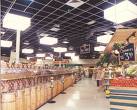 The selected lighting fixtures must be located and installed in such a way as to ensure:
The selected lighting fixtures must be located and installed in such a way as to ensure:
a) safety and easy access to lighting fixtures for maintenance;
b) creation of standardized lighting in the most economical way;
c) compliance with lighting quality requirements (uniformity of lighting, direction of light, limitation of harmful factors: shadows, lighting pulsations, direct and reflected glare;
d) the smallest length and ease of installation of the group network;
e) reliability of fixing bodies.
The main factors that determine the choice of lighting fixtures are:
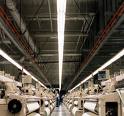 a) environmental conditions (presence of dust, moisture, chemical aggressiveness, fire and explosive areas);
a) environmental conditions (presence of dust, moisture, chemical aggressiveness, fire and explosive areas);
b) the construction characteristics of the premises (including the height, the presence of trusses, technological bridges, the dimensions of the building module, the reflective properties of the walls, ceiling, floor and work surfaces);
c) lighting quality requirements.
The selection of a specific type of luminaire is based on design, light distribution and glare reduction, and economic considerations.
The choice of lighting fixtures according to their design
The design of the lighting fixture is largely determined by the level of its protection from environmental influences.
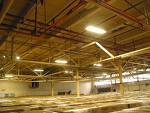 The design of lighting fixtures determines their reliability and durability in the given room conditions, safety against fire, explosion and electric shock, as well as ease of maintenance.
The design of lighting fixtures determines their reliability and durability in the given room conditions, safety against fire, explosion and electric shock, as well as ease of maintenance.
All types of non-protected (IP20) luminaires are permitted in normal dry and wet rooms.
In damp rooms it is also allowed to use unprotected lighting fixtures (IP20), but provided that the sleeve is made of insulating and moisture-resistant materials.
In particularly humid rooms and in rooms with a chemically active environment, the use of lamps is recommended with a degree of protection not lower than IP22, in dusty rooms — not lower than IP44.
In hot rooms — not lower than IP20, and amalgam lamps are recommended in lighting fixtures with fluorescent lamps.
If the existing nomenclature of lighting fixtures presents the possibility of using not the only, but several possible lighting fixtures in terms of design, it is almost always advisable to choose the one with the highest working group, which characterizes the ability of the lighting fixture to maintain a high lighting qualities during work. This approach allows, under certain conditions, to accept lower values of the safety factors, which in turn leads to a reduction in the installed power of the light sources, a reduction in electricity consumption.
The selection of lamps according to their lighting parameters
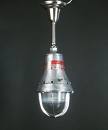 The correct choice of a lighting fixture for light distribution determines the economical use of the luminous flux of the light source, leads to a reduction of the installed power of the lighting installation. All things being equal, it is preferable to choose lighting fixtures with higher efficiency, despite their higher price. These extra costs pay off in energy savings.
The correct choice of a lighting fixture for light distribution determines the economical use of the luminous flux of the light source, leads to a reduction of the installed power of the lighting installation. All things being equal, it is preferable to choose lighting fixtures with higher efficiency, despite their higher price. These extra costs pay off in energy savings.
In industrial premises with low reflectivity of walls and ceilings, it is recommended to use direct luminaires of class P with light distribution of type K (concentrated) for high ceilings (more than 6-8 m), with a lower height of the ceiling — with light distribution of type D (cosine), less often G (deep). As the height of the room increases, the illuminator used must have a high degree of light flux concentration (K, G) and conversely, in low rooms it is recommended to use lighting fixtures with a wider distribution of light (D, D).
With high reflective properties of walls and ceilings of industrial premises (light ceilings and walls), it is recommended to use lamps with mainly direct light of class H.
With high reflective properties of the floor or work surfaces, class P lamps get an advantage, because in this case, due to the reflection, enough light flux falls into the upper hemisphere to create acceptable visual comfort.
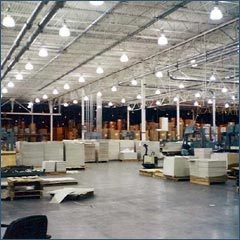
Luminaires with predominantly direct class P and diffuse light P with light distribution curves D (cosine) and L (half-width) are recommended to be used for lighting administrative, classrooms, laboratories, etc.
Luminaires of classes B (mainly reflected light) and O (reflected light) are used to create architectural lighting for industrial premises, civil buildings. For outdoor lighting — lighting fixtures with light curve W (wide).
When choosing lighting fixtures, their blinding effect is taken into account according to the glare indicator, which is normalized and compared to the actual glare indicator. In practice, when designing lighting installations, due to the difficulty in calculating this indicator, this characteristic is taken into account indirectly by the minimum permissible height of suspension of lighting fixtures.
Choice of lighting fixtures for economic reasons
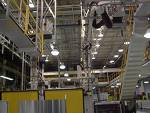 The selection of lighting fixtures according to the efficiency criterion is carried out at minimum reduced costs. However, given that the main component of the annual operating costs is the cost of electricity, it is possible, with some approximation, to estimate the efficiency of the lighting fixture according to the energy efficiency criterion.
The selection of lighting fixtures according to the efficiency criterion is carried out at minimum reduced costs. However, given that the main component of the annual operating costs is the cost of electricity, it is possible, with some approximation, to estimate the efficiency of the lighting fixture according to the energy efficiency criterion.
Energy efficiency is understood as the ratio of the normalized (minimum) illuminance (Emin) to the specific power Ru: Eu = Emin / Ru, where Ru is the specific power equal to the ratio of the installed power of the lamp to the area of the illuminated room.
The increase in energy efficiency is a consequence of reducing the specific installed power of the light sources needed to create a given lighting.
 At a low height (up to 6 m), it is possible to achieve quality indicators, such as minimal uneven lighting, permissible ripples and glare, only with the help of a large number of lamps with a relatively low unit power of the light source (LN and LL).
At a low height (up to 6 m), it is possible to achieve quality indicators, such as minimal uneven lighting, permissible ripples and glare, only with the help of a large number of lamps with a relatively low unit power of the light source (LN and LL).
In high rooms, it is more economical to use powerful light sources (DRL, DRI, DNaT) and a small number of lamps, each of which must have an optimal light distribution for a certain option. Therefore, the selection of the type of lighting fixtures is carried out simultaneously with the selection of their placement schemes on the plan of the illuminated room. The height of the illuminated room also determines the economic type of light distribution of the lighting fixtures.
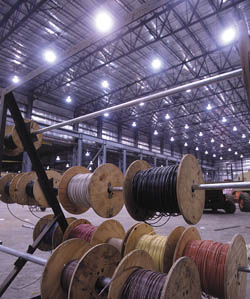
For each typical curve of light intensity (type of lighting fixtures), there is the most advantageous relative distance between the lighting fixtures, which provides the greatest uniformity of illumination distribution, as well as the most advantageous relative distance between the lighting fixtures, which provides maximum energy efficiency .The relative distance between the lighting fixtures is the ratio of the distance between them (L) to the calculated height of the suspension of the lighting fixtures above the work surface (Нр) — L / ХР.
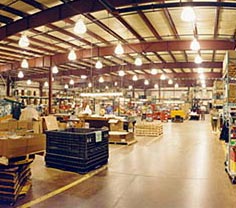
Installation height of lighting fixtures and spotlights
To ensure efficiency, convenience and safety of maintenance, lighting fixtures must be installed:
- when serving from stairs or ladders — not higher than 5 m above the floor level;
- in electrical rooms near live parts — at a height of 2.1 m above the floor; when serving from cranes — at a height of 1.8 — 2.2 m above the deck of the crane or at the level of the lower chord of the trusses;
- when serving from special bridges or platforms — at the level of the pavement of the platform ± 0.5 m (exceptionally, at a height of no more than 2.2 m above the pavement);
- on racks when serving from technological facilities — no higher than 2.5 m above the level of the platforms.
Lighting fixtures for outdoor lighting are installed at a height of 6.5 (less powerful) to 10 m (most powerful), spotlights — at a height of 10 — 21 m. Lighting devices with xenon lamps are installed on masts with a height of 20 — 30 m.
Read also: Design of electrical lighting for industrial premises
